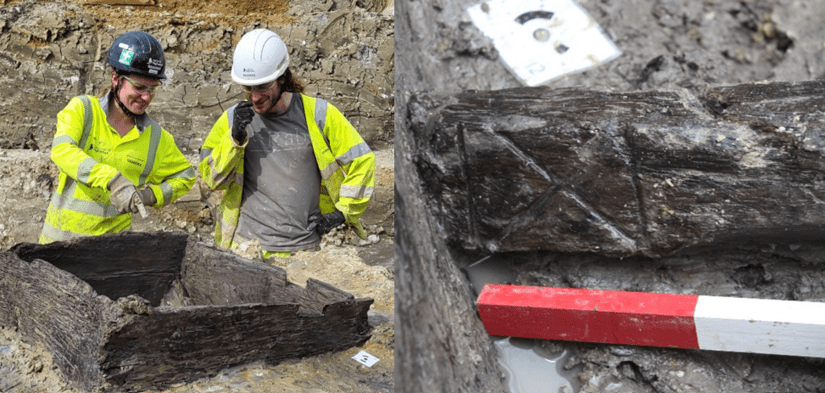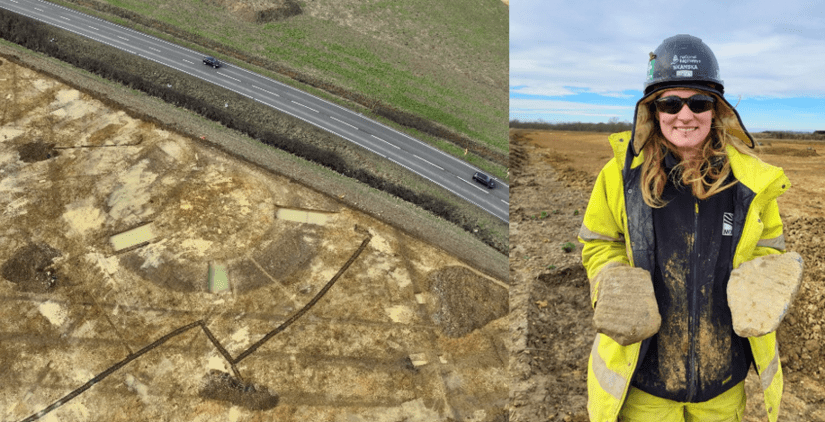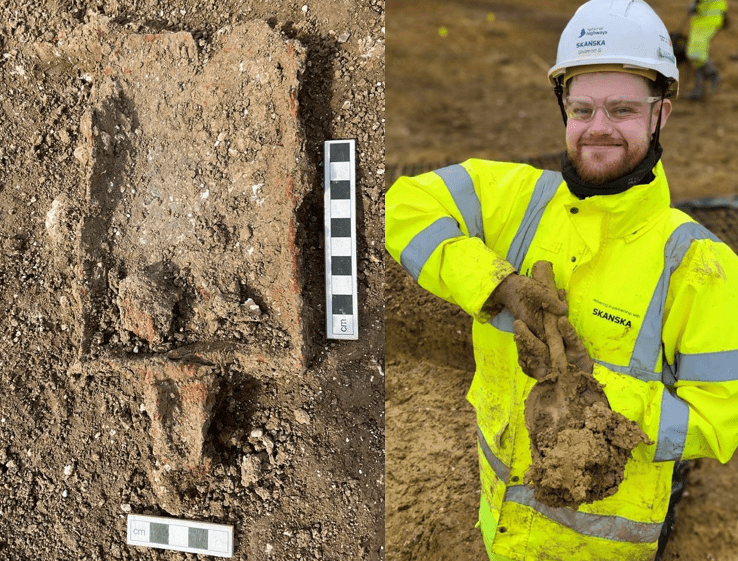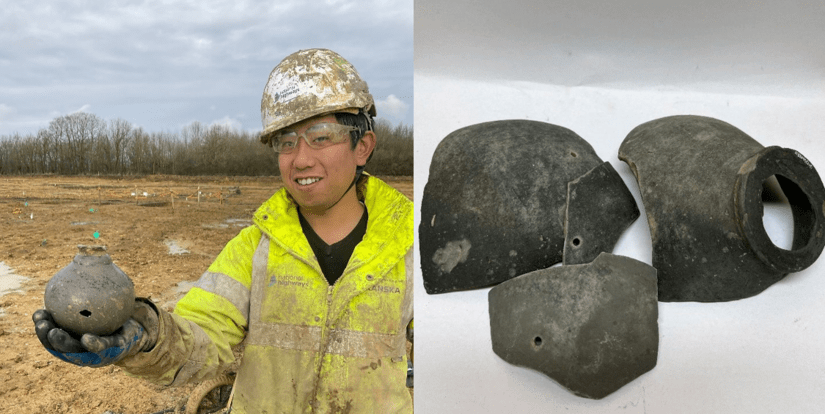A428: Our Top 5 Finds
Over the past two years, our team have collectively worked for 197,161 hours - that’s around 26,290 days! We've excavated:
-
4276 metres of ditches. This is about 10% of the total length of ditches uncovered on the scheme. If we laid them all out in a line, it would be double the length of the new road!
-
43 roundhouses, including some of the biggest roundhouses ever found in the country, which we've recreated in virtual reality
-
56 kilns, ovens, and wells, including some which contained the remains of Iron Age beer-making
None of this would have been possible without our brilliant archaeologists and supervisors on site and behind the scenes, including our post-excavation processors, specialists, managers, the engagement team and many more!
While our dig has finished, that’s not the end of our work. We’ll continue to study and analyse our discoveries during the post-excavation phase of the project, and we look forward to sharing more amazing stories of Bedfordshire and Cambridge’s past as we uncover them. But for now, we’ve picked our top 5 finds from 2024 – read on to find out what they are!
Roman wells
This was our last big find of the dig! During the final weeks of excavations, we uncovered two Roman (43-410 AD) wells. Excitingly both contained preserved wooden elements which revealed the secrets of their construction – including a DIY disaster!
The first well was 8.5 metres deep, which makes it deep as the average modern two-storey house is high. It contained the remains of a wooden ladder, but surprisingly it had collapsed before it was ever used.
The second well shows its builders took additional steps to prevent another collapse. It was lined with wooden boards to support the wells’ structure and stop it caving in. It was also slightly smaller at 6.5 metres deep. Inside this well were sawn off branches, woodchips and off-cuts of planks, dumped by the Romano-British carpenters, after the well went out of use. This wasn’t just locals making items for themselves or doing repairs to their houses. The amount of waste-wood suggests there was a substantial industry here.
These wells helped fuel the expansion of a settlement that began as a quiet farmstead in the Middle Iron Age (around 350 BC) but was transformed into a hive of industrial activity during the early Roman period (AD 43-150). There is evidence of Romano-British metalworking, carpentry, and woodworking all taking place here, inside a large, gated enclosure.
The contents of the well will now be carefully studied by specialists. Some of the larger pieces of wood even have decoration, including horizontal lines and crosses, which could offer a clue as to what was being made here.

Medieval mill
Another outstanding recent discovery was the remains of a medieval (1066-1485) windmill. None of the mill survives above ground, and the mound it once stood on was levelled for farming, but just below the surface and filled up with soil and silt was the windmill’s moat. This contained an incredible wealth of finds, including:
- The broken remains of two millstones, including one imported from Germany
- Lots of pottery sherds, including beautiful medieval green glazed ware
- Animal bones
- Over 100 iron nails, likely from the wooden windmill building
- Metal farming tools, a horseshoe, a scythe, and a possible coulter (blade) from a plough
- Personal items including shoe or belt buckles
- Clay tobacco pipe stems from the post-medieval period

Roman shovel
One find our team particularly enjoyed was this 'Batillum', a Roman (AD 43-410) hand shovel. That’s because it looks just like the shovels our archaeologists use every day!
Batillum had many different uses, including as fire shovels. It was found in a large Roman enclosure, where there was lots of evidence of activity, including pits, postholes, gullies, and a watering hole. There was also charcoal in the soil, perhaps moved using this very shovel!

Apple seeds
One person's 2000-year-old rubbish is another archaeobotanist's treasure and that was certainly true during the A428 excavations! Our archaeobotanists (specialists who study ancient plant remains) discovered the remnants of a crab apple, including seeds, in a sample of charred plants.
Before the Romans brought over the large, tasty, apples we enjoy today, crab apples, which are much smaller and tarter, were the only apples growing in Britain. A small find like this really helps us build up an image of this landscape over 2000 years ago, including the plants that were growing and what people were eating.

Holey Roman pots
We’ve uncovered a huge amount of Roman pottery during the A428 excavations, from high-status stamped Samian ware to everyday British pottery. But some pieces were more than a little unusual...
They appear to have been deliberately damaged by having holes drilled into them!
One theory is that the Romans often created holes within pottery vessels when they were no longer in use to allow spirits to escape.

JOIN US ON OUR JOURNEY!
#A428BlackCat
Find out more about the A428 National Highways scheme
Excavations are being undertaken by archaeologists from MOLA, as part of the National Highways A428 Black Cat to Caxton Gibbet Improvement Scheme.